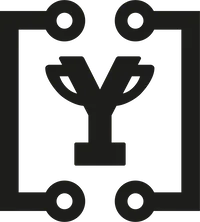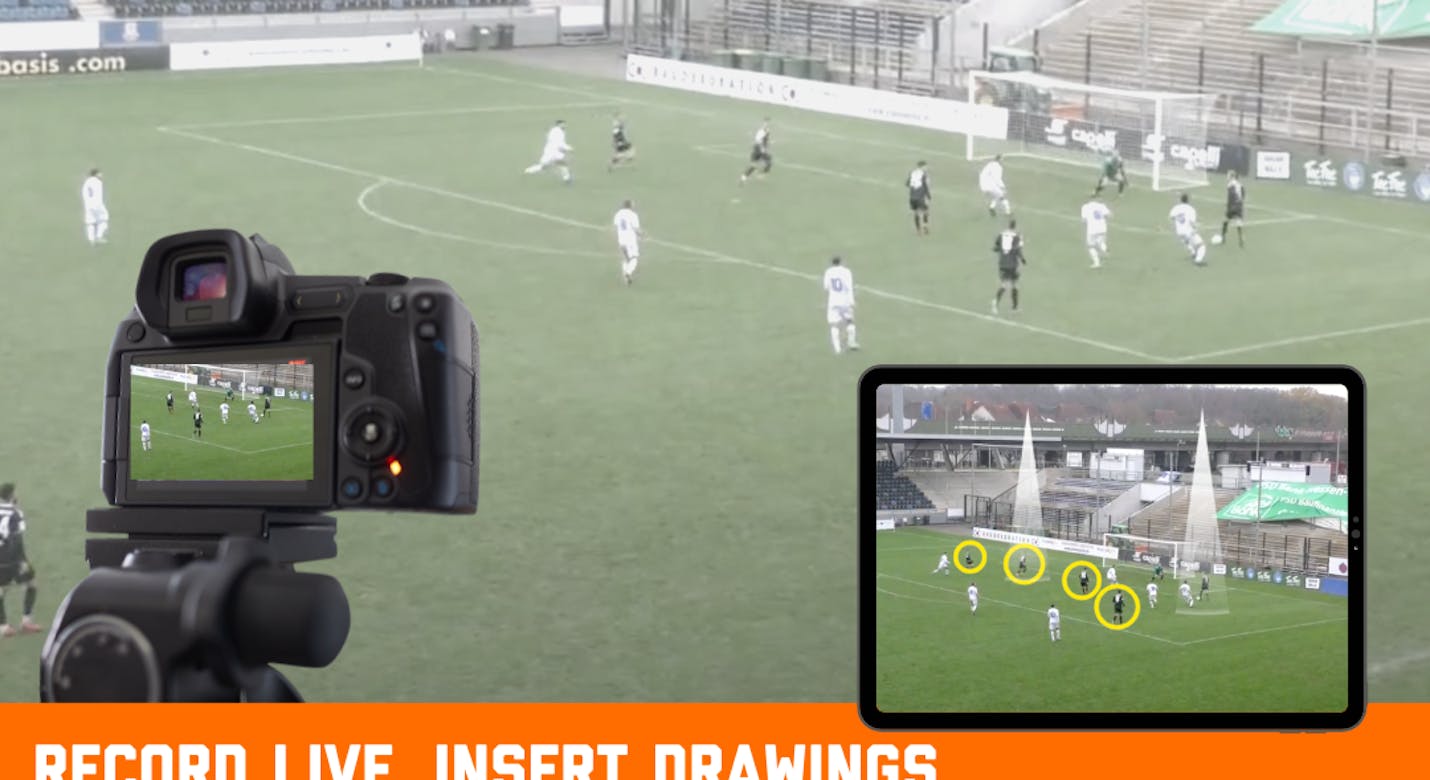Video analysis: Football practice report by Florian Brachtel
At VfB Hallbergmoos-Goldach e.V. we use Athlyzer in both the men's and youth sections. Even though our internal focus is fundamentally different in both areas, Athlyzer is the basis of all match analyses in the club.
Successful class preservation after relegation in the Bavarian "Oberliga"
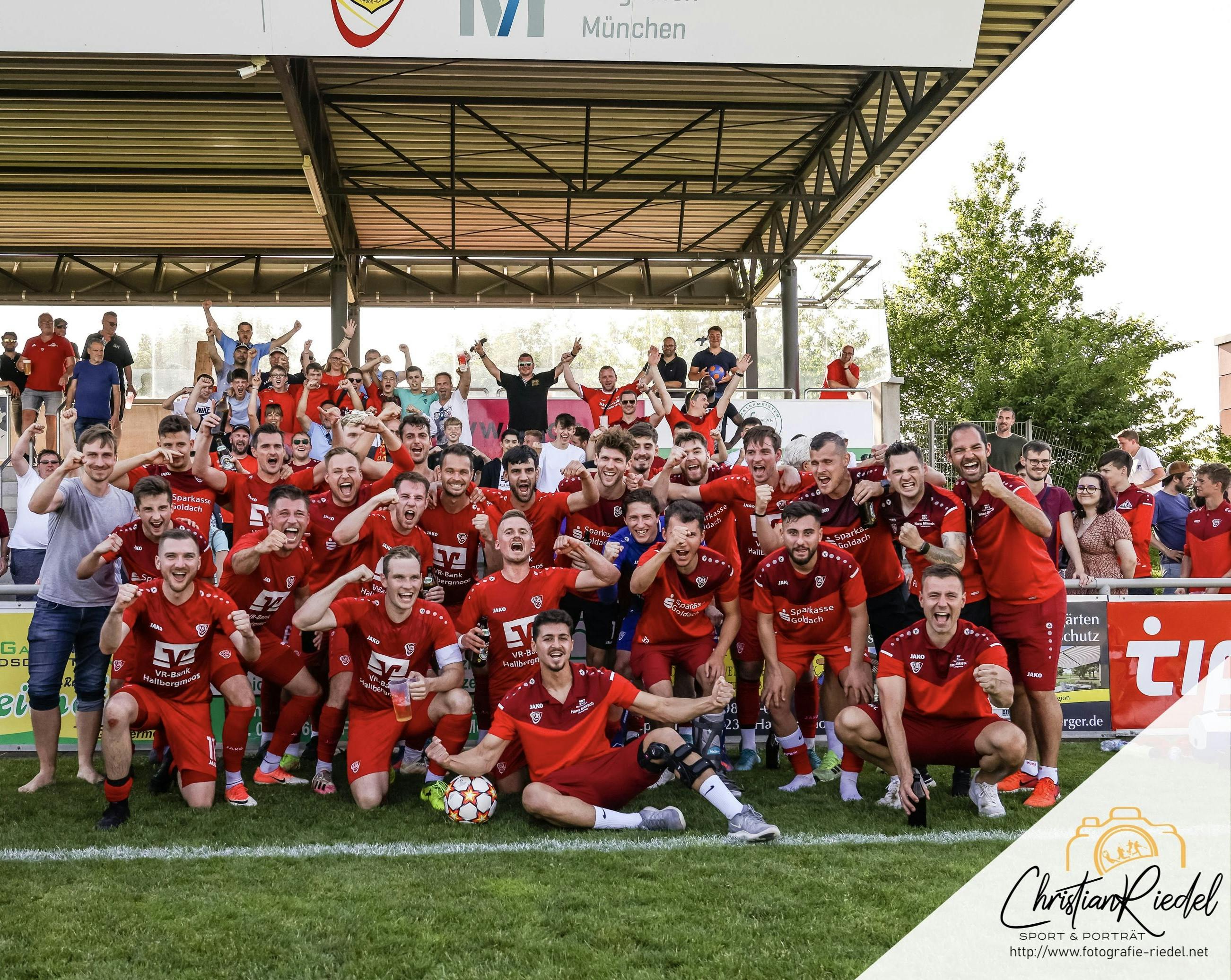
In the men's division, Athlyzer is mainly used by our Bavarian League (Oberliga) team (my role: co-trainer). The primary goal here is to use the game analysis as a tool to prepare sporting SUCCESS in the best possible way in "theory" and then put it into practice. In the junior department, we use the software primarily for our U15 juniors who play in the Bezirksoberliga (My role: head coach). The focus here is on player/personality development.
We also make a fundamental distinction between self-analysis (our own style of play) and opponent analysis. Derived from the different "objectives", in the junior section we mainly deal with analyses of our own game and in the men's section we focus on analyses of the next opponent (+ additional own analyses).
The 5-phases of opponent analysis
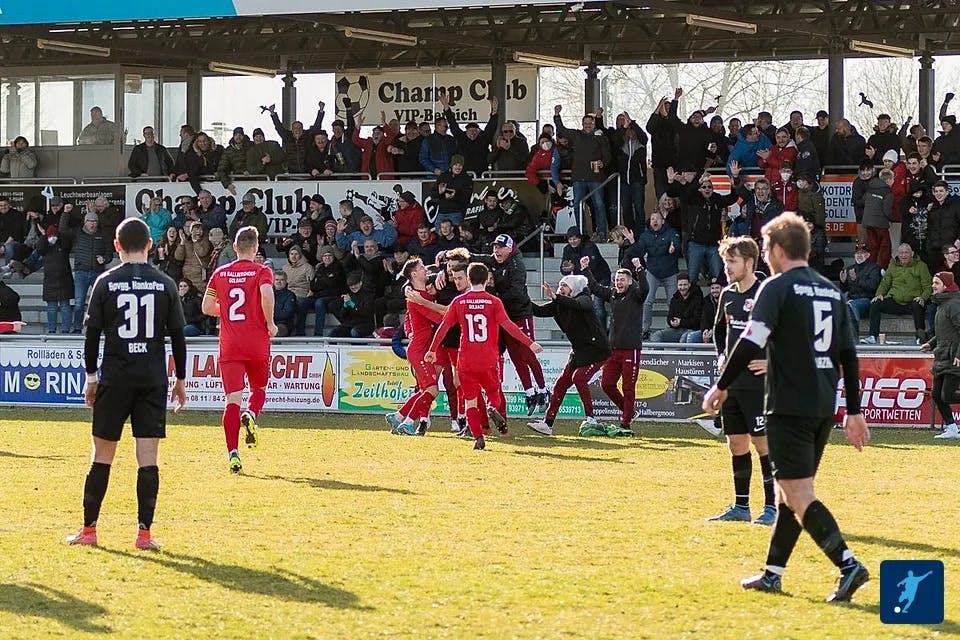
Celebration after the last-minute victory against the league leader (1st game under the new coaching team)
We structure the analysis of the opponents according to the five phases of the game: Playing with the ball, playing against the ball, switching play after winning the ball, switching play after losing the ball and standards. In all phases of the game, we look for basic behaviours and recurring patterns in order to best prepare the team for the next opponent.
Note: The detailed preparation for the opponent should serve the own MATCHPLAN and should therefore not concentrate on the "problems" but always on the respective solution. If the solutions are then additionally provided with clear instructions for action, the supposedly theoretical analysis can be directly put into practice in the subsequent training forms. The instructions can be directed at individual players (individual tactics), different parts of the team (group tactics) or all players on the pitch (team tactics).
The (opponent) video analysis can also have an impact on the chosen basic order (static) or the playing system (dynamic depending on the phase of the game).
Video-Analysis-Example: Start-up behaviour TSV Neudrossenfeld vs. SV Seligenporten (first leg of 1st round of relegation to Bayernliga) and our opponent in the final relegation round
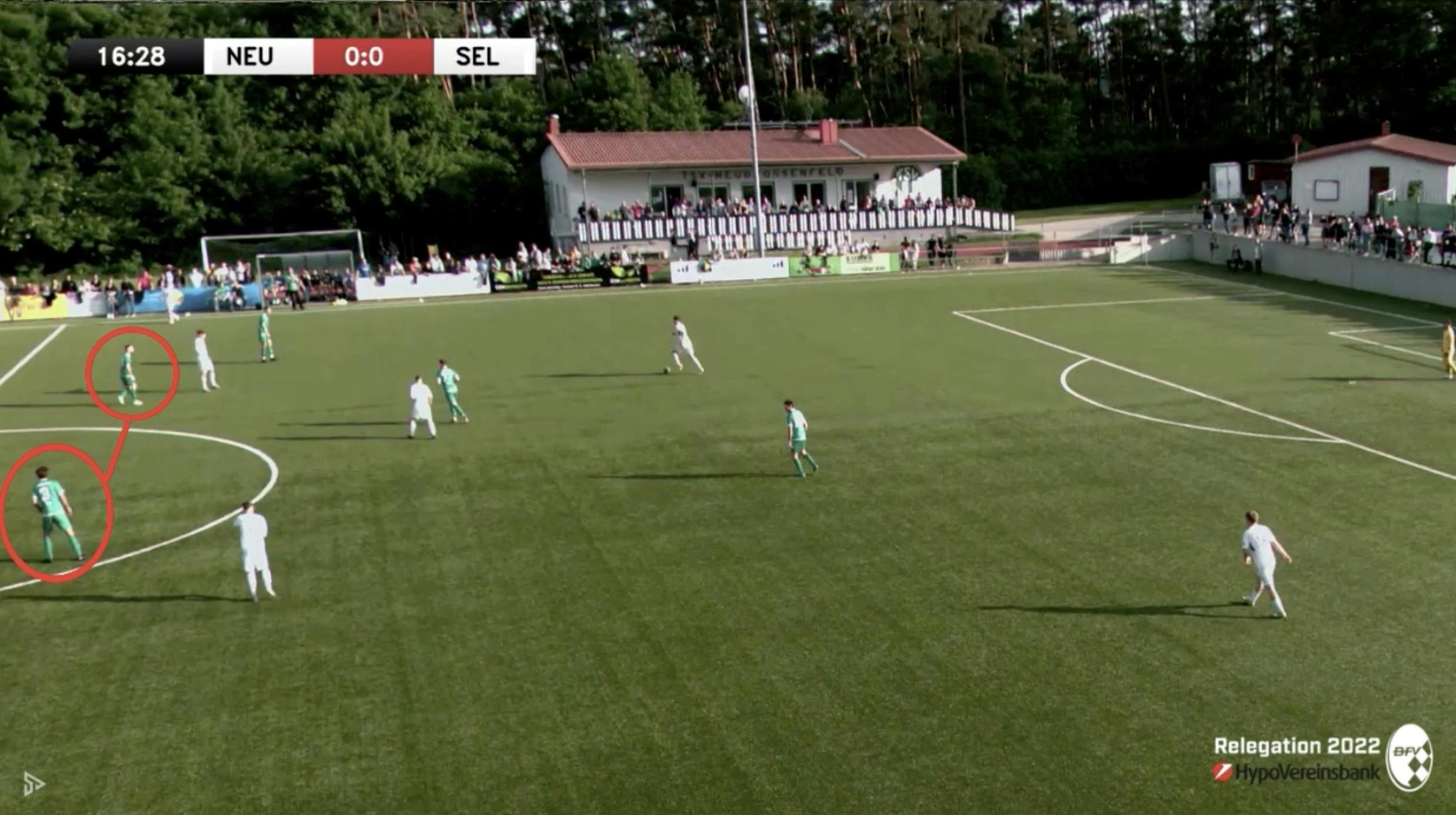
Neudrossenfeld started in a 4-2-3-1 (situationally in a 4-4-2 flat). Strikers and 10s often let themselves be lured and started relatively high, but the last chain did not follow up accordingly, and the two 6s repeatedly played next to each other at the same level and were therefore not centrally staggered. For our match plan, this meant that we wanted to repeatedly build up with a flat chain + deep 6s in order to pull the offensive players of Neudrossenfeld out of their order or to bind them and at the same time to scatter deep runs in order to make the last line of the opponent fall. In this way (as seen in the video) spaces were to be created between the two chains of four (defence + midfield), which we wanted to run into with counter-attacking movements and then play in order to be able to run at the opponent's defence at speed and create chances.
PRACTICE TIP: Small difference - big effect
Initially, we always presented the "opponent preparation" to the players in the video sessions before the next game. Through a change in awareness in the coaching team and a clear focus on SOLUTIONS (for our own game), this became "match preparation" in the course of the second half of the season. A seemingly small detail but with a big impact on the perception of the players and coaches. In our opinion, merely preparing for the opponent without deriving instructions for one's own players is not effective. Preparing for the opponent(s) puts the opponent(s) in the foreground, preparing for the game directs the attention to one's own game and one's own team. "Where focus goes energy flows!" ;)
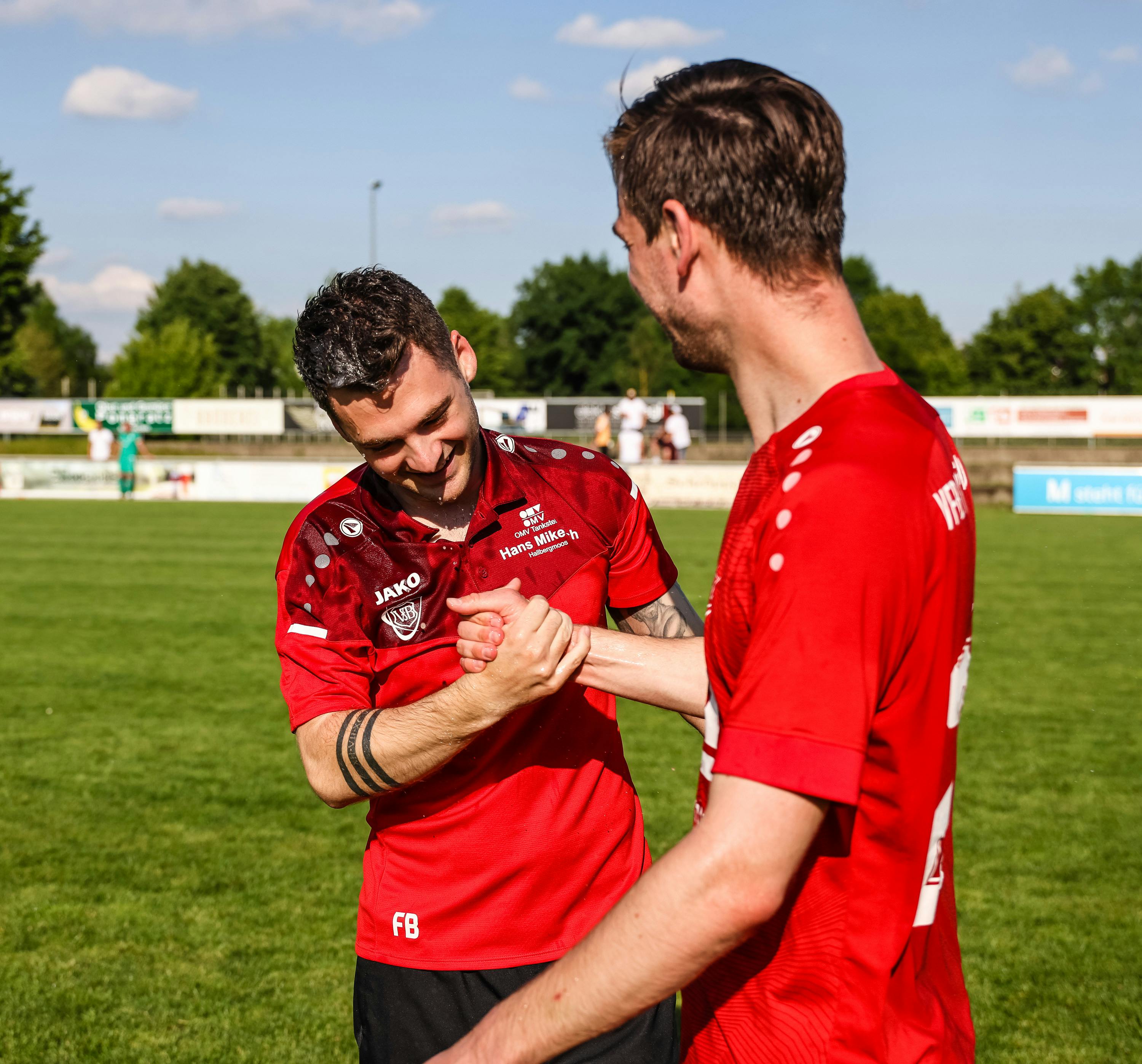
Beer shower - thanks and praise for the coach
Short vita of Florian Brachtel
- former player with FC Bayern München (5 years), SpVgg Unterhaching (4 years), SV Wacker Burghausen (2 years)
- Coach for 6 years, e.g. in the U17 Bayernliga coaching team of SpVgg Unterhaching
- Current functions at VfB Hallbergmoos: Co-coach men's Bayernliga (focus on game analysis & athletics), sporting director youth (15 teams), U15 head coach (Bezirksoberliga)
- UEFA B licence completed in Hamburg 2020
- Sports management studies with a focus on football (graduation in autumn at best ;))
- DFB Honorary Volunteer Award in the 2020/21 season "for outstanding and exemplary voluntary work".
